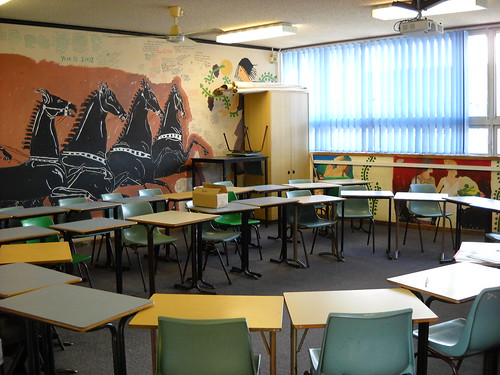Focus
Question:
What
are the essential ideas for teachers from research on the science of learning?
-Research
on the science of learning focuses on active engagement of the students. Active
learning means that each student is involved in the learning process both
physically and cognitively. Research shows that physically participating in a
lesson is more effective than just sitting behind a desk for hours at a time. Metacognitive
thinking is when students can assess their way of thinking. This allows them to
identify what they already know and what they still need to learn. These two concepts
are important in a student-centered teaching approach. In this philosophy of teaching,
the teacher creates situations where students can problem solve and participate
in class discussions.
-The
four learning theories: behaviorism, cognitivist, constructivism, and
constructionism are used in many classrooms today. Each theory uses technology
and computers in different ways. In the behaviorism theory, learning is said to
be a process of memorizing. The computer systems are carefully arranged and
controlled. The computer is the source of knowledge. In the cognitivism theory,
interaction is emphasized. This strategy uses active learning and metacognitive
skills. The constructivism theory manipulates the surroundings in a different way
for each student. The constructionism theory says that learners build their own
knowledge. This strategy believes that students will benefit more from the
knowledge that they build themselves rather than being forced.
-The
science of learning also ties in with the five types of unique, powerful, and
transformative learning in NETS-S and the 21st Century Student
Outcomes: critical thinking and problem solving, digital literacies,
communication and collaboration, creativity, and digital citizenship. These five
categories use digital technology to propel new learning and organizational
change.
Digital
Dialog 3.1:
When
it comes to learning, I prefer visuals and interactions. There are certain
subjects that I can learn better by reading a book. I prefer to learn visually
when learning new math concepts and when being taught how to create something.
I also like the use of visuals when learning about art. I prefer to learn
history by book because I feel that history lectures do not capture my attention.
Recently, I have learned how to create a rubric using Rubistar. The YouTube
video with step by step instructions made it easier for me to learn. I could
easily follow along and see how to start from a blank page. I have also
recently learned how to create measurable learning objectives using an online
tutorial in my other class. When I become a teacher, I plan on adjusting the lesson
and activities to benefit all different learning preferences. I can use
computer visuals for directions and then have the students perform a hands-on activity.
In
this chapter I have learned about the four learning theories and how they use
technology to enhance learning. The two teaching philosophies, teacher-centered
and student-centered use technologies in different ways as well.
Student-centered teachers use technology as an aid in class discussion, while teacher-centered
teachers use it for lecture purposes. I find it interesting how two opposite
teaching approaches use the same technology but in different ways. The picture below
is an example of what a student-centered classroom would look like. The desks
arranged in a circle allow open discussion and interaction amongst the
students. In this chapter I have also learned more about the 4 instructional
methods to engage students in learning. I personally favor the one-on-one
tutoring method. I think students benefit from one-on-on help from the teacher.
Circle of Desks 1, a photo by perkinsy on Flickr.
Resources:
Maloy, Robert, Verock-O’Loughlin, Ruth-Ellen, Edwards, Sharon A., and Woolf, Beverly Park (2013). Transforming Learning with New Technologies. 2nd Edition. Boston, MA: Pearson Education, Inc.

Good synopsis and appreciate your inclusion of personal insights - keep it up and especially increase your reflection about the material more than reiterating and summarizing the chapter's content. :)
ReplyDeleteYour comment about the impact of 1-to-1 tutoring is quite important as that has a lot of individualization, but I wonder about the 'reality' in economic measures, as well as the lack of social integration...though I realize there's interaction between teacher and student. One thing is for sure - it reflects the importance of differentiation...however we can achieve it! :)